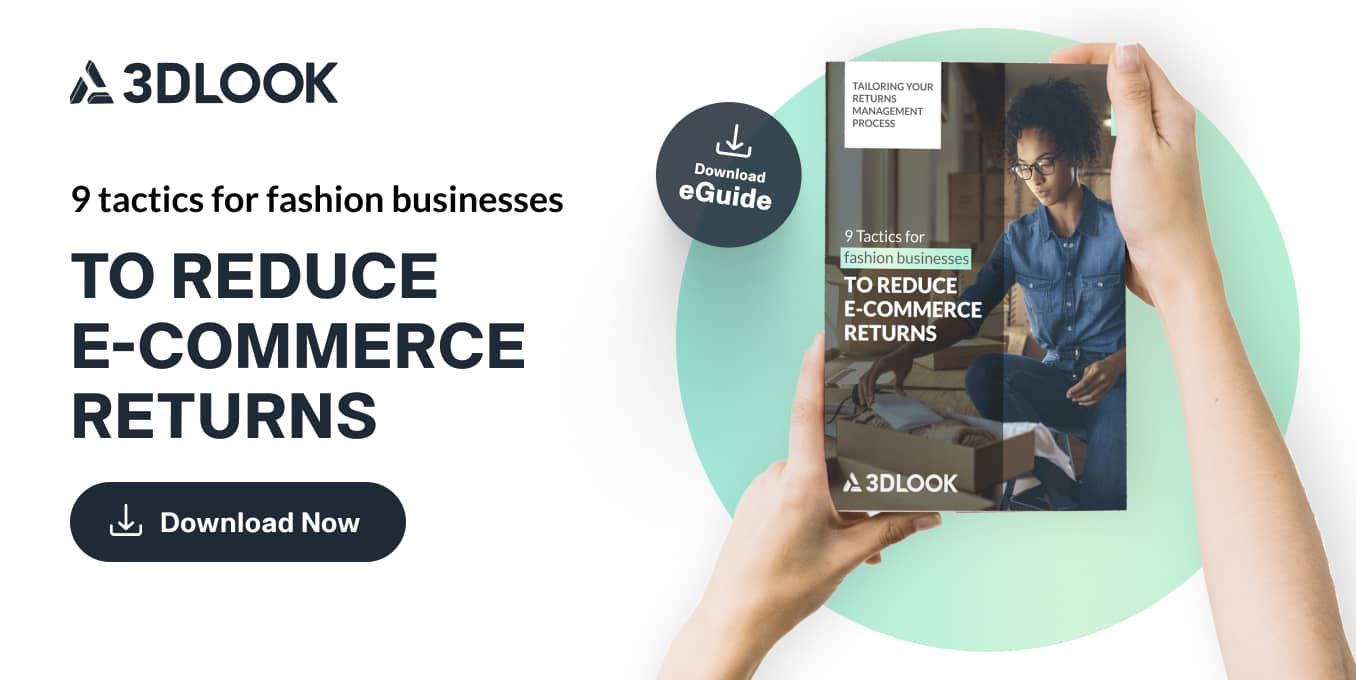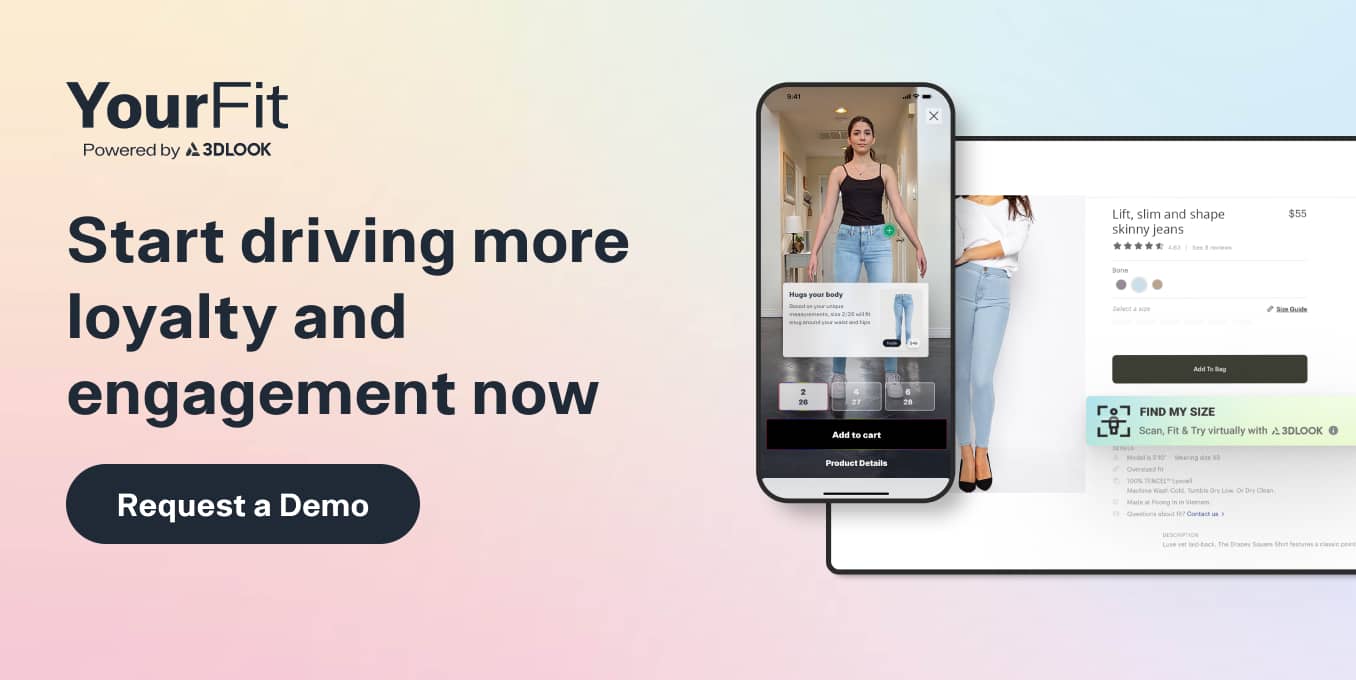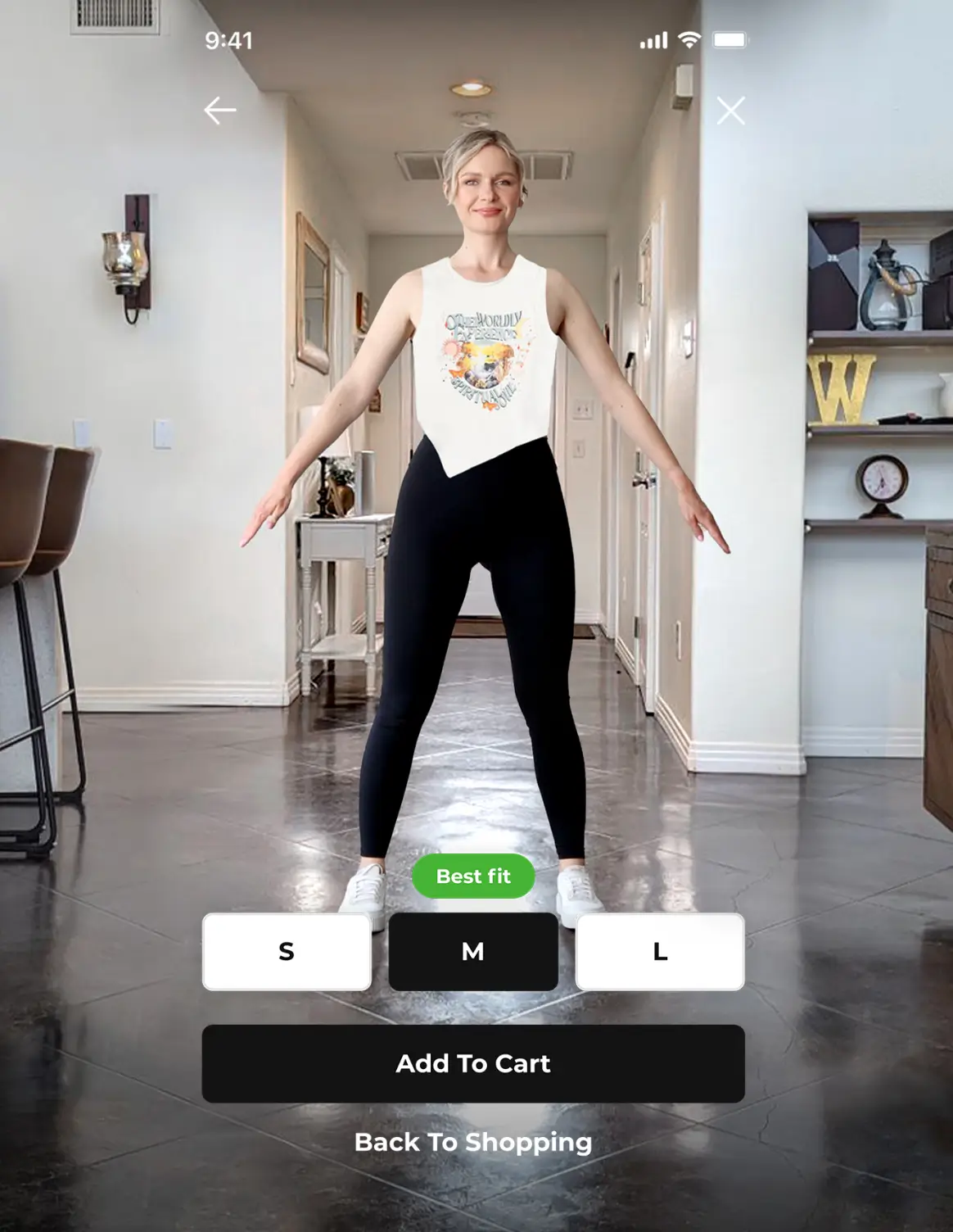While many fashion retailers view high returns as a necessary evil, current return rates will become unmanageable as e-commerce catches up to brick and mortar shops. By considering the customer experience, solving pain points and leveraging technology, here’s how brands can overcome sky-high returns.
E-commerce fashion sales jumped by 11% in 2020 as COVID-19 forced shoppers online, according to McKinsey. Given the convenience of online shopping, coupled with straightforward return processes that allow consumers to buy, try and return garments at no cost, the global fashion e-commerce market is expected to continue growing at an annual rate of 10.6%, according to Shopify, reaching $713B by 2022.

Without in-store fitting rooms to try before they buy, this growth will coincide with a swell in returned goods. While brick and mortar return rates average between 8% and 10%, the average online shopping return rate stands at 30%, and can be as high as 50% in some apparel markets, Shopify’s Fashion Industry Report states. That is why the question of how to reduce returns in e-commerce is so relevant right now.
Why must fashion businesses learn how to reduce customer returns?
While many retailers view high returns as a necessary evil, current rates are unsustainable. Approximately one truck load of clothing is sent to landfill every second, with returned stock making up a significant portion — According to Optoro, just 50% of returns go back into inventory.
Not only does this cost businesses an estimated $550B annually, but our environment pays the price too, with fashion ranking as the world’s second biggest polluter behind the oil industry. By learning how to reduce customer returns and implementing changes that address the leading causes of dissatisfaction among shoppers, businesses can eliminate this avoidable financial and environmental cost.

E-commerce returns: The main causes of spiraling eCommerce return rates
Both retailers and consumers play a role in fuelling an unsustainable apparel e-commerce return rate. From retailers failing to address issues with fit, to shoppers taking advantage of easy-going return processes, these are the main reasons for product return:
Poor fit
A recent 3DLOOK poll revealed that sizing struggles is one of the biggest challenges faced by apparel manufacturers today, and it shows — with 90% of women struggling to find clothing that fits their bodies, it’s no wonder that 70% of returns in fashion retail are due to poor fit or style, according to McKinsey.

Faults and imperfections
For online shoppers, evaluating the quality of a garment before purchasing can be difficult. Loose threads, subpar materials and manufacturing errors are likely to see products shipped straight back. For 79% of shoppers that return goods, if the issue isn’t fit-related, it is due to dissatisfaction over quality, according to Yopto.

Inflated expectations
Whether due to poor product descriptions, enhanced imagery (or a lack of), and overstated quality, consumers often feel that the garments they receive aren’t up to the standard that was sold to them. According to SaleCycle, products that fail to live up to their description is the second biggest culprit behind e-commerce’s sky-high return rates.

Consumer indecision
Often, consumers simply change their mind about a purchase. What was the perfect garment at the time of purchase may be deemed an eyesore once the consumer sees it on their body.
Likewise, many experience a sense of guilt after making a purchase. According to WWD, 77% of U.S. consumers have experienced buyer’s remorse after purchasing a fashion item, 25% higher than any other product category.
Permissive return policies
Many retailers feel easy-going return policies are vital to maintaining loyalty, believing customers may shop elsewhere if they cannot offer a returns process that favors consumers. Consumers have grown accustomed to the freedom offered by simple and free returns, with 49% admitting return policy influences where they shop, according to Barclaycard.
Bracket shopping
Lenient return policies encourage practices such as bracket shopping, where consumers purchase multiple variants of a product to try on different styles or sizes. Intensified by COVID-19’s store closures, the trend is here to stay with 38% of consumers admitting the pandemic has made them “more confident in returning online purchases,” according to Mintel.
Clothing returns management best practices: How to reduce returns in fashion e-commerce
Retailers shouldn’t settle for astronomical return rates that negatively impact bottom line and sustainability. Using these clothing returns management best practices, fashion brands can learn how to reduce returns in e-commerce without damaging the customer experience.
1. Improve product clarity
Providing a clear and detailed description of each product is a must — from high-quality imagery, to clear product information that tells the customer exactly what to expect.
Trend-setting retailers should consider augmented reality solutions. One of the examples of ar in fashion retail, is 3DLOOK’s YourFit – the first and only 3d virtual fitting solution for apparel shoppers that offers photorealistic virtual try-on functionality combined with highly accurate, data-driven size recommendations.
The solution utilizes photos of clothing taken directly from brands’ product pages, which makes it easy for brands to scale the technology and save time and resources, since there is no need for them to create digital copies of their collections in 3D.
To use YourFit, online shoppers simply choose an item of clothing and click on a widget on a product page to be voice-guided through a quick and easy scanning process using a smartphone camera. The solution then displays exactly how the item would look on the individual and what size would fit best, giving brands the unique ability to offer their consumers a genuine dressing room experience online.

YOURFIT
3DLOOK’s YourFit solution displays exactly how the item would look on the individual and what size would fit best, giving brands the unique ability to offer their consumers a genuine dressing room experience online!
2. Provide comprehensive sizing information
Provide as much sizing information to your customers as possible. The ordinary tables with the correspondence of dimensional grids are insufficient in this case. Measure all apparel parameters and provide this information to the buyer, including the smallest details such as pocket-size, zipper length and armpit distance. This can be a time-consuming and lengthy process, but keep in mind that the more accurately the buyer selects the size, the fewer returns the online store will receive.
3. Leverage fit technology
Digital fit and sizing solutions can help customers to find the perfect size – whether shopping in-store or online – and bring an end to the unmanageable bracket shopping trend. 3DLOOK’s YourFit 3d dressing room solution, provides customers with personalized sizing recommendations in seconds, uses just two photos to generate precise body data for each and every customer. Not only does this remove the complexity of finding the right fit, but also provides brands with valuable data to target customers with product recommendations, and optimize product development, inventory planning and distribution.
Using YourFit, 3DLOOK’s customer Tailored Brands is finally tackling poor fit to achieve return rates far below the average.
4. Add product videos to your site
You may want to consider adding a video aspect to your website if customers send products back because they do not fulfill the expectations specified in the product description. Product videos are becoming more and more helpful in enhancing conversion rates, as buyers can visualize themselves better when they have seen a product video.
It is not necessary to have large finances and movies to make short films to be included within your product descriptions. Simple, short movies that provide a 360° view of the goods are everything you need in order to reduce returns. A video explaining how the item is to be used for more sophisticated products can enhance the consumers’ purchase experience and simplify the product’s use once it has been acquired.
5. Introduce customer database segmentation
Persons and traits formed by examining your customer database carefully are significantly more precise than overall representations of high-risk consumers. Return-prevention segmentation does not vary greatly from marketing segmentation, as you are simply trying to uncover patterns, behaviors, characteristics and other important measures in order to make smarter choices.
The efficiency of this method depends on the measurement depth you have collected and on your overall results and processes.
6. Enhance customer support
While a positive customer return process can encourage customers back, a negative experience will turn customers away. With no store assistants to offer help, brands must implement easy-to-access touchpoints for e-commerce customers to reach a representative. With 58% of shoppers stating that excessive phone and email communication creates ‘friction,’ according to ReturnMagic, live chat can answer customer concerns in a more timely fashion.
7. Emails following the purchase
After purchase, sending emails to your customers can be a very effective way to cut returns and avoid poor customer experiences. Use this chance to inform customers about the product, minimize objections to returns and make sure that people are interested in what they have just purchased.
Emailing after purchase is a significant part of solving the issue of how to reduce returns in e-commerce and provide optimum customer support to notify clients about the way they have purchased.
8. Ensure ease of use
With 40% of consumers having struggled to do simple tasks on e-commerce websites, as reported by RetailDive, retailers must consider whether their platform is causing confusion that leads to incorrect or accidental purchases. Product pages and checkout should be uncluttered and intuitive so customers know exactly what they are purchasing.

9. Don’t neglect delivery
Nearly 40% of one-star reviews result from delivery issues, according to HelloDrone, with post-purchase problems most common among fashion retailers. Customers often purchase garments with an occasion in mind, so failing to deliver on time will result in returns. Retailers must make delivery dates clear across their websites – and before the customer has committed to a purchase.
Likewise, with 5% of products returned due to defects, retailers should consider how they ship their products to ensure it arrives with the customer in the same condition as it left the warehouse in.
10. Pay attention to the product packing
Your packaging consideration will vary for each item depending on what you sell. Plan your product path and make your packaging options based on it, as another important reason for the returns is the items that come broken or damaged, due to poor wrapping.
Improving your packaging of products can also help to identify the source of the items remaining damaged, because you are aware that the issue is more likely to lie with the courier rather than with your packaging. That means that you can set time to assess how your courier performs and you can take action to find a new one if you notice a lot of returns from the same courier.
11. Build trust & loyalty
Brands must create customer experiences that benefit their customers. Short return windows, for instance, are likely to cause higher return rates as customers feel rushed to make a decision. Offering a longer return window will not only boost customer satisfaction, but could cut returns by half according to SalesSupply.
Retailers should constantly communicate with customers, gathering reviews and feedback to refine the shopping experience. Offering a little something in return, whether a small discount or a gift of gratitude, can help to strengthen customer loyalty.
Let’s implement ecommerce returns best practices and make apparel return rates sustainable
A recent survey by McKinsey, shows that consumer’s interest around sustainability and slow fashion trend increased significantly over the last few years, with three in five now claiming environmental impact as an important factor in making purchasing decisions.
Smart e-commerce returns management is a sustainability effort in itself.
By following these e-commerce returns best practices, fashion brands can significantly reduce returns, increase efficiency, lower their carbon footprint and limit landfill waste.
Addressing the reasons for returning clothes, inspiring womenswear brand 1822 Denim has seen returns fall by 30%. By considering the customer experience, solving pain points, and leveraging technology to enhance the shopping experience, your fashion business could achieve a similar reduction in returns.

YOURFIT
The solution displays exactly how the item would look on the individual and what size would fit best, giving brands the unique ability to offer their consumers a genuine dressing room experience online.


